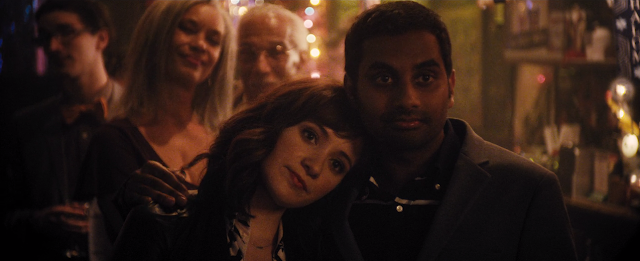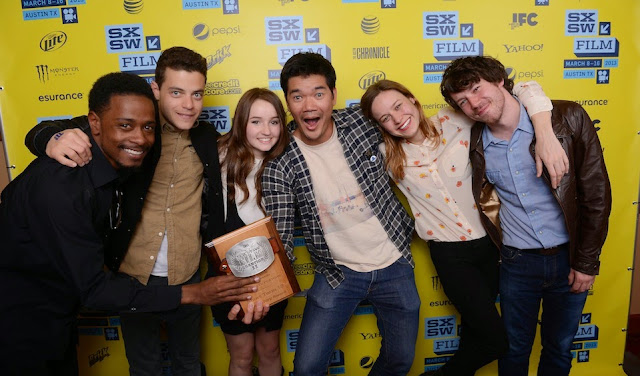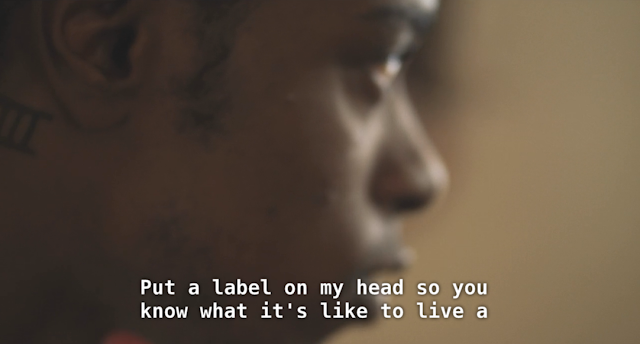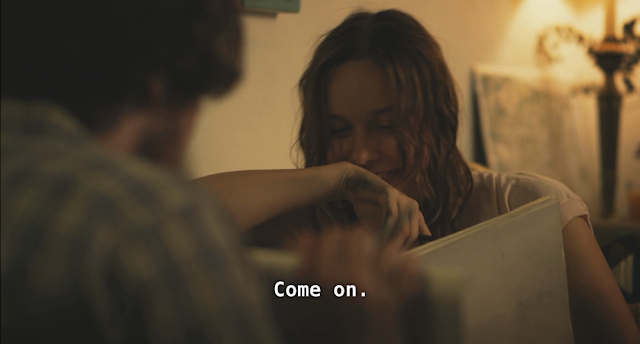Cell phones have ruined movies forever. They've made it more difficult for screenwriters to come up with suspenseful situations. You couldn't write either Rear Window or North by Northwest today because every moment of suspense would become impossible for the nitpickers in the audience to take seriously due to "Hmm, you know he or she could use his or her smartphone to save his or her own ass in this situation." The constant advances in cell phone technology have even affected movies that have aged pretty well--when they don't involve phone scenes, that is. The appearance of any kind of phone in a largely timeless movie that's not a present-day cell phone immediately makes that otherwise timeless movie dated.
Thanks to the cutting-edge work of cinematographer Jeff Cronenweth and director David Fincher, whose visuals have always been cutting-edge and distinctive (whether in Fincher-directed music videos like Aerosmith's "Janie's Got a Gun" video or more recent Fincher films like the Cronenweth-lensed Gone Girl), the 1999 anti-consumerism cult favorite Fight Club looks like it could have been filmed yesterday, and it stands the test of time--for several minutes. But then Edward Norton is seen standing in a pay phone booth to dial up his new soap salesman friend Tyler Durden (Brad Pitt), and Fight Club instantly becomes dated.
I had not watched Fight Club in 16 years, before rewatching it as prep for today's edition of Throwback Thursday. In addition to containing the only film score by the Dust Brothers of Paul's Boutique fame (who really ought to compose more scores, due to their outstanding work on the 1999 film, which can be heard during either "AFOS Prime" or the first 33 seconds of the trailer below), Fight Club remains my favorite Fincher film. It's still my favorite even when the appearance of a pay phone wrecks the timelessness and anonymity both Fincher and the various adapters of Chuck Palahniuk's thought-to-have-been-unfilmable 1996 novel of the same name, including credited screenwriter Jim Uhls and uncredited Andrew Kevin Walker from Seven, tried to aim for in their portrayal of modern-day malaise (the city Fight Club takes place in is unspecified, despite the frequent use of L.A. locations, as is the name of Norton's narrator character, although the shooting script referred to him as Jack--we'll call him Jack from this point on).
Much of the appeal of Fight Club stems from the fact that we've all experienced Jack's feelings of malaise (he's nameless for a reason: so that male audience members can name the narrator after themselves). Okay, so you may not be a privileged white male yuppie like Jack, but you can definitely relate to his dissatisfaction with his job as an auto recall specialist and the feeling of emptiness that triggers his insomnia and has him doing anything to feel alive, whether it's going through an IKEA shopping phase, faking diseases and crashing support group meetings with his frenemy Marla Singer (Helena Bonham Carter) or forming with Tyler an underground fight club to blow off steam, for men only (no Marlas allowed).
A good example of the film's ability to connect with viewers long after it tanked at the box office (Palahniuk's material isn't unfilmable--it's unmarketable, as 20th Century Fox realized while inanely trying to sell Fight Club as a TBS Movie for Guys Who Like Movies back in 1999) was when former RogerEbert.com editor Jim Emerson interestingly called Fight Club one of the most accurate depictions of clinical depression ever made and praised how it captures the way that depression is all-consuming. "It helped shake me out of the grips of a depression that was sucking me down at the time," wrote Emerson.
 |
| (Photo source: DVD Beaver) |
(Spoiler time. Weirdos who have never seen Fight Club can leave now.)





































